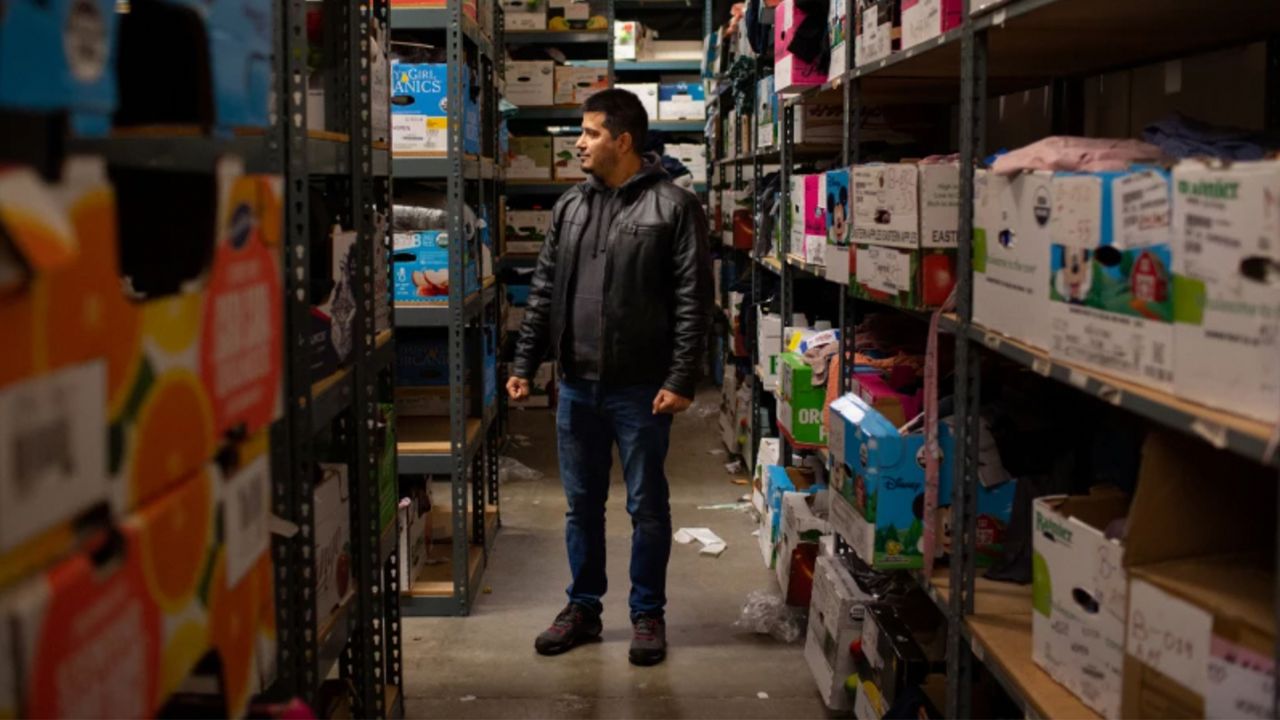Brain injuries in sports are often associated with football, but athletes in other sports — like former Stanford volleyball player Hayley Hodson — have been impacted by it as well.
LA Times freelance writer Patrick Hruby writes Hodson had it all, but everything changed in an instant.
Hodson is from the Los Angeles area, and she was the top recruit in high school — nationally for volleyball for 2015.
"She was on the cover of magazines, and she actually practiced with the US Olympic women's volleyball team as a high school player. Only three players ever have done that, and she's one of them. She was also a tremendous student who taught herself calculus while she was practicing with the US Olympic women's volleyball team. She was kind of one of those super people," said Hruby.
After graduating from high school in 2015, Hodson attended Stanford University —which has one of the best women's volleyball programs in the country year in and year out.
"She was not a big fish in a small pond; she was excelling at the highest level of college volleyball, and again was also a good student. Stanford is also an academically challenging school, and she fit right it and loved it there," added Hruby.
However, toward the end of her freshmen season, during practice, her team was doing something called a "courage drill," which is when a coach stands on a ladder over the net and hits sharply angled balls down at the players to teach them to dig them out. That is when things changed for Hodson.
"The way Hayley describes it is that they were doing that drill with her teammates hitting the ball at full speed, which does not give you much time to react. I talked to another volleyball coach who told me that he did the same drill as a college volleyball player, but he and his teammates wore football helmets while doing it. So, that gives you an idea of some of the risks of this drill. One night Hayley is doing it; she gets hit in the head, suffers a concussion, goes to the emergency room, and gets diagnosed," said Hruby.
Hodson was concussed on a Monday night. She then traveled with her team to some games in Washington State, but she was held out of a game on Thursday at first. However, she was back on the court on a Sunday morning, playing in a match against Washington State.
"It was very fast and very aggressive. In retrospect, it looks like it was too soon. She comes back to Stanford and is cleared the next day. And that's when her problems start. But then there's a second hit that comes a few weeks later in a match against UCLA, where she's hit in the head with a ball during the game. She didn't come out and wasn't evaluated then or after the game for a concussion. She believes she was concussed a second time. After that, things start to go downhill for her," added Hruby.
After the match against UCLA, Hodson started having insomnia, her appetite vanished, and she was afraid to be alone. She started feeling depressed; she was getting migraines and had trouble concentrating in school.
"One of the more interesting symptoms is called exercise resistance. So essentially, she used to love working out and exercising. That was one of the things that made her great. Now, every time she tried to work out just to stay in shape for volleyball, she was actually feeling nauseous and was playing terribly. Her body doesn't want to do it. Another weird symptom is that she craved sugary foods and feeling exhausted all the time. Again, these are weird mood behaviors, and we don't always associate that with concussions, but those can be symptoms too; it's very important for people to realize that," said Hruby.
Hodson filed a lawsuit in 2018 against Stanford and the National Collegiate Athletic Assn. for failing to provide proper medical care for those injuries, allegations the school and the NCAA deny.
"She had to medically retire eventually because she had what is called post-concussion syndrome, which means your symptoms don't actually go away. And that is very much a big risk if you get hurt and then are rushed back to playing and then get hurt again before you've recovered. And that is kind of the basis of her lawsuit. She's asking for better medical coverage, she's asking for better moderate of drills and the way people play, she's asking for warning labels on volleyballs," said Hruby.
"She basically wants the NCAA, Stanford, and sports, in general, to take this more seriously, to protect players better, and to not rush them back before they've recovered. Since she's told her story, so many players have reached out to her with similar stories. So I do think that this is something where it is not just her but there is a bigger problem in the sport but it is better late than never that people start to realize it and do something about it. The one thing about Hayley's story that really struck me is that it didn't have to be this way. The ongoing symptoms that she's still experiencing today were preventable. Had she been held out long enough, had she not been exposed to that second hit, there's a really good chance we wouldn't be talking about this right now."











